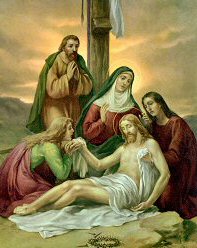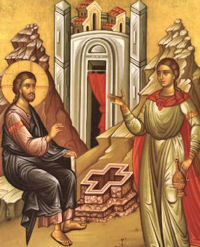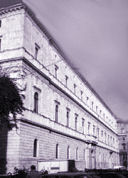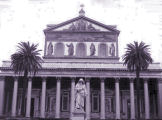Fifth Sunday of Lent
Gospel, John 12;20-33.
Jesus foretells his passion and explains its sacrifice.
HOMILY by the Redemptorist The Living Word illustrates the Gospel, Jn 12;20-33, by the testimony of the Monks of Tibhirine, Algeria 1996.
“Just as the French monks in the film demonstrate the best of radical discipleship, interfaith peacemaking and universal love, we too are called to serve God and the world. In particular we are called to find our common humanity amidst all that divides people today. Jesus will help us in this, and there will be times when his presence breaks in upon us and becomes so real that we will feel like one of the disciples sitting in his actual presence.”
"lt anyone serves me, my Father will honour him."
Illustration
An award-winning 2010 French film, Of Gods and Men, tells the story of seven French Trappist monks based at a monastery in Algeria. They were kidnapped and beheaded in spring 1996 after being caught up in a bloody conflict between the Algerian government and an extremist Islamic group. The Trappists saw the danger they were in but opted to remain in their monastery. They wanted to continue to serve the local people who were also suffering from the conflict.
They lived simply, praying their liturgies, sharing manual labour, selling honey at the local market, and serving their Muslim neighbours. The monastery was known as a safe place of friendship between Muslims and Christians. Despite warnings for foreigners to leave, the monks maintained their daily witness to peace, offering employment in the monastery gardens and medical care. As the film unfolds, we join their prayer, discussion and discernment. We witness their brave decision to remain with the people and suffer their fate. A "last supper" brings them all together, during which - sipping a glass of wine that already represents their sacrifice - each face reflects the fear of what awaits them, and the serenity of the choice they've made.
After their deaths we learn of an open letter written by the prior, Brother Christian, in which he thanks God for his life and pardons his killers.
Gospel Teaching
Today's Gospel marks a turning point in the life of Jesus. He acknowledges this himself with the words, "Now the hour has come." It is as if everything in his life has been building up to this moment. Some biblical scholars take the view that the visit of the Greeks asking to be introduced to Jesus is a watershed in the Gospel story. At that time, Greeks were considered with suspicion by most Jews, but here are Greeks recognising that Jesus is somebody they should meet. The disciples don't know what to do about the visit, but when they finally decide to tell Jesus he reacts positively. It is as if everything is falling into place, and he and God will at last be glorified.
Another way to put this is that the new covenant that Jeremiah talks about in the first reading - probably from a prison cell - is being realised. God will pursue sinners and people can have a direct relationship with God. Jesus says that the lives he and the disciples have lived and loved up to now will have to be left behind to begin the new life ahead. This new development will bring pain and suffering, but it is necessary, not only for Jesus but for his followers as well. At the end of today's Gospel Jesus says that when he is lifted up from the earth, he will draw all people to himself. With these words Jesus reveals a great truth - that we all belong together, and the basis of our togetherness is that we are all equally loved by God.
Application
To believe and live out that truth of God's love is simultaneously our greatest joy and our greatest difficulty. Christians are not protected from pain and sacrifice. Just as the French monks in the film demonstrate the best of radical discipleship, interfaith peacemaking and universal love, we too are called to serve God and the world. In particular we are called to find our common humanity amidst all that divides people today. Jesus will help us in this, and there will be times when his presence breaks in upon us and becomes so real that we will feel like one of the disciples sitting in his actual presence.
Lent is the season of the year when many Christians give up something as an outward expression of an inward transformation. To give up something is to relinquish it, to lose it, to renounce it. Today Jesus hints at the ultimate loss anyone might experience, to give up life as one might normally live it. There are also losses that are thrust upon us that are totally involuntary, like the death of a loved one, sickness, or getting fired from a job. In giving up, letting go and dying to some things, says Jesus, we can position ourselves to live life all the more fully.
Lent is about changing whatever it is that is blocking the fullness of life in us right now. Lent urges us to wake up out of our apathy and complacency and choose a path that gives us life and brings life to others.

























